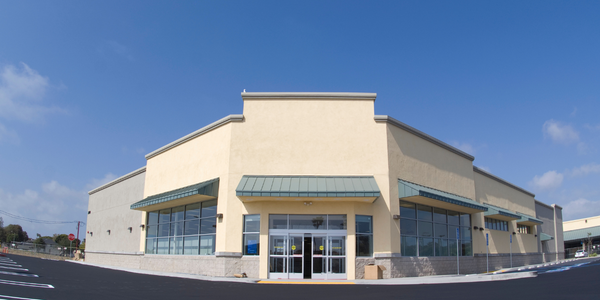Dealing with Increasing DSO and Dispute Volumes with Artificial Intelligence
Customer Company Size
Large Corporate
Region
- America
Country
- United States
Product
- Cash Application Cloud
- Deductions Cloud
Tech Stack
- AI-based Remittance Prediction
- Multi-OCR Engine
- Intelligent A/R Matching Engine
Implementation Scale
- Enterprise-wide Deployment
Impact Metrics
- Cost Savings
- Customer Satisfaction
- Productivity Improvements
Technology Category
- Analytics & Modeling - Predictive Analytics
- Application Infrastructure & Middleware - Data Exchange & Integration
- Functional Applications - Enterprise Resource Planning Systems (ERP)
Applicable Industries
- Apparel
Applicable Functions
- Business Operation
- Quality Assurance
Use Cases
- Predictive Replenishment
- Process Control & Optimization
- Remote Asset Management
Services
- Software Design & Engineering Services
- System Integration
About The Customer
Komar, established in 1908, is a manufacturing and distribution apparel company with a diverse portfolio of owned, licensed, and private label brands. The company operates on a global scale, distributing apparel through Komar Distribution Services. With a revenue of $250 million, Komar has a significant presence in the wholesale distribution industry. The company faced challenges in managing cash application and deductions due to its extensive international distribution network.
The Challenge
Komar, a global apparel distribution company, faced significant challenges in managing cash application and deductions on a massive scale. The A/R teams worked in silos, leading to blocked orders and negative customer experiences. Inefficient deductions processes caused bottom-line erosion and reduced employee productivity. The manual cash application process increased costs and delayed cash processing, resulting in higher DSO and negatively impacting downstream processes.
The Solution
HighRadius provided Komar with cloud solutions to automate cash application and deductions processes. The Cash Application Cloud leveraged AI to apply cash swiftly, increasing analysts' productivity. It featured multi-OCR Engine auto-captures for accurate remittance data and automated cash posting. The Deductions Cloud automated deduction coding and dispute management, reducing research time and enabling smarter dispute resolutions. The solution also predicted deduction validity and facilitated collaborative workflows for tracking and approval.
Operational Impact
Quantitative Benefit

Case Study missing?
Start adding your own!
Register with your work email and create a new case study profile for your business.
Related Case Studies.

Case Study
Fire Alarm System and Remote Monitoring Sytem
Fire alarm systems are essential in providing an early warning in the event of fire. They help to save lives and protect property whilst also fulfilling the needs of insurance companies and government departments.Fire alarm systems typically consist of several inter-linked components, such as smoke detectors, heat detector, carbon monoxide, manual call points, sounders, alarm and buzzer. The fire alarm system should give immediate information in order to prevent the fire spread and protect live and property.To get maximum protection a shoe manufacturer in Indonesia opted for a new fire alarm system to monitor 13 production sites spread over 160 hectars. Although the company had an existing fire alarm system, it could not be monitored remotely.It was essential that the new system would be able to be monitored from a central control room. It needed to be able to connect to the existing smoke detector and manual call point. Information should be easily collected and passed on to the Supervisory Control and Data Acquisition (SCADA) system. Furthermore, the system should have several features such as alarm management, auto reporting, being connected to many client computers without additional cost, and run 24/7 without fails. The company also needed a system which could be implemented without changing the architecture of the existing fire alarm system.

Case Study
IoT Applications and Upgrades in Textile Plant
At any given time, the textile company’s manufacturing facility has up to 2,000 textile carts in use. These carts are pushed from room to room, carrying materials or semi-finished products. Previously, a paper with a hand-written description was attached to each cart. This traditional method of processing made product tracking extremely difficult. Additionally, making sure that every cart of materials or semi-finished products went to its correct processing work station was also a problem. Therefore, the company desired an intelligent solution for tracking assets at their factories. They also wanted a solution that would help them collect process data so they could improve their manufacturing efficiency.

Case Study
Retailer Uses RFID Scanner to Improve Efficiency
Patrizia Pepe wished to improve the logistics of their warehouse: accepting incoming goods from their production sites, movement of items throughout
the warehouse, and packaging of goods for distribution to the retail locations. They initially tried to use barcodes for this function. Because barcodes must be individually scanned within a line-of-sight, the acceptance of goods coming into the warehouse was too time consuming. Working with the University of Florence, Patrizia Pepe instituted a five-month pilot project beginning in August of 2009 to test the validity of an RFID solution. The pilot involved tagging of about 60,000 items for the second seasonal collection, and convinced the company to move forward with tagging all items.

Case Study
Monitoring and Controlling Automatic Mixing and Dispensing Machines
As technology advances, textile manufacturing has been transformed from a labor-intensive to a partially or fully automated industry. Automation is significant in all segments of textile production - from spinning to printing, and textile machinery manufacturers are constantly searching for new technologies and automation processes will increase the productivity of their machines. The color paste mixing and dispensing machine is an essential part of the printing and dyeing process. With the advantage of automatically computerized controls and database management, the system can significantly improve its dispensing precision, working efficiency and production quality as well as reducing material consumption.




